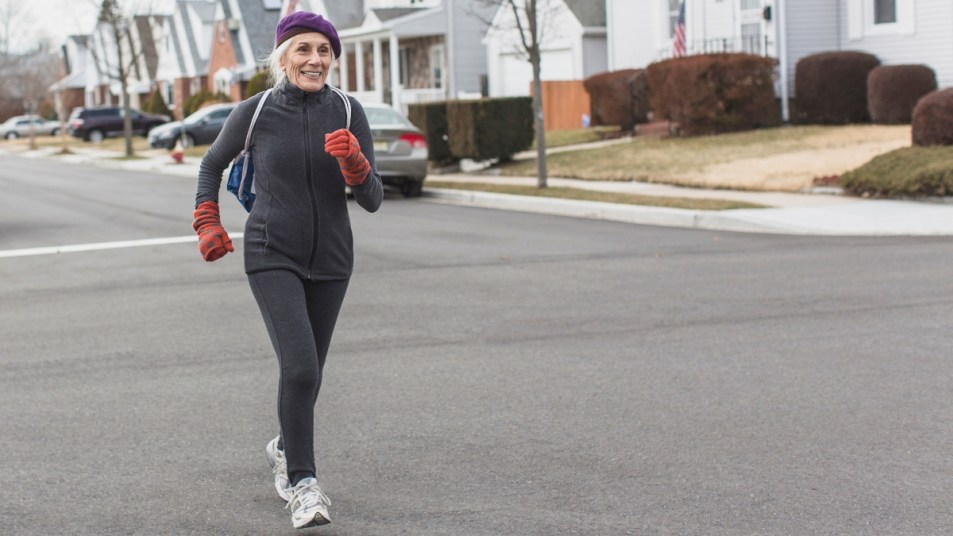5 Ways to Stay Safe and Healthy Exercising Outdoors in Winter Weather

For me, winter exercise usually means at-home, indoor workouts and walks on the treadmill. I don’t step out into the cold unless I have to! But recently, I’ve been craving a little more time outdoors, and wondered how to do it safely. Would I need to stretch more before taking a walk outside? How much water would I need to drink?
Winter exercise doesn’t have to be boring, but it does require a little extra preparation. To find out more, I reached out to some experts. Korin Hudson, MD, a specialist in sports and emergency medicine at MedStar Health, and Blanca Lizaola-Mayo MD, an internal medicine physician, gastroenterologist, transplant hepatologist, and co-founder of SOS Hydration, offered their insights.
Do an indoor warm-up.
“Before enjoying the great outdoors, do a warm-up inside for at least 15 minutes,” says Dr. Hudson. “This exercise will warm your muscles, raise your body temperature, and get a little sweat going. Make sure you stretch after your workout too, until your heart rate drops to its resting rate.”
Indeed, research shows that warming up prior to exercise significantly reduces your risk of injury. Wondering what type of warm-up to do? Try this simple routine for older women, featured below!
Keep your extremities warm.
“It’s important to keep your head, ears, hands, and feet well covered when you exercise outdoors,” says Hudson. “A thick beanie or headband is easy to take off if you get hot, and paired with gloves and thick socks, you’ll stay cozy in the cold. Remember good footwear for slippery sidewalks.”
(Trying to decide what gloves to buy for some winter exercise? Check out these finds, which keep budget and style in mind.)
Wear plenty of layers.
“If you’re planning to go on an outdoor run or walk, layer your clothing,” says Hudson. “Start with a base layer that will keep you warm and wick away sweat, then keep adding layers depending on the temperature outside.” Remember: You can always remove a layer and tie it around your waist, but it’ll be harder to return home for a jacket!
Start slowly.
Don’t try to push yourself when you venture outdoors, especially if it’s cold. The roads could be slick, and you do not want to risk a fall. Plus, the sharp, cold air could make it a little harder to breathe.
“When it is extra cold outside, stick to a 30- to 60-minute workout, depending on your fitness level, and increase your workout time gradually,” suggests Hudson. “This approach helps ensure that your heart and body have time to adapt to the cold weather while you exercise.”
Drink up.
Don’t let a lack of sweat fool you. “Although you may not sweat as much in the cold air, staying hydrated is key to a good workout,” Hudson says. “Make sure to drink lots of fluids before and after your workout, as dehydration may be difficult to spot during the cold weather and could negatively affect your cardiovascular system.”
If you do sweat, it’ll be harder to tell that you’re dehydrated in the cold. “Layers of clothing can over-regulate our temperature, and when we sweat, our clothing immediately absorbs the moisture we would otherwise feel,” adds Dr. Lizaola-Mayo. “This can lead us to not notice when we’re losing fluids. The indoor heat not only dries out your skin but can impact your fluid intake and lead to dehydration.”
Lizaola-Mayo says that proper hydration and electrolytes are key to a successful workout, and we couldn’t agree more. Try fueling up beforehand with your favorite electrolyte drink, and then go ahead and venture out to enjoy the great outdoors!
















